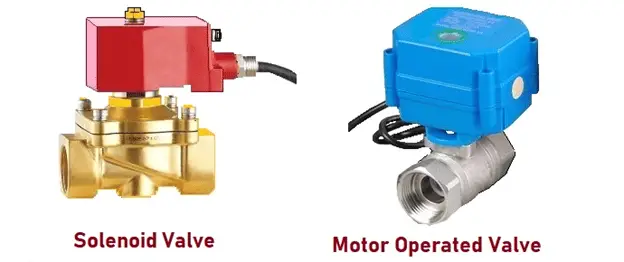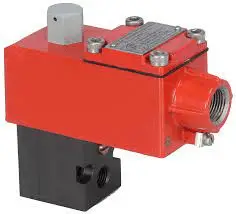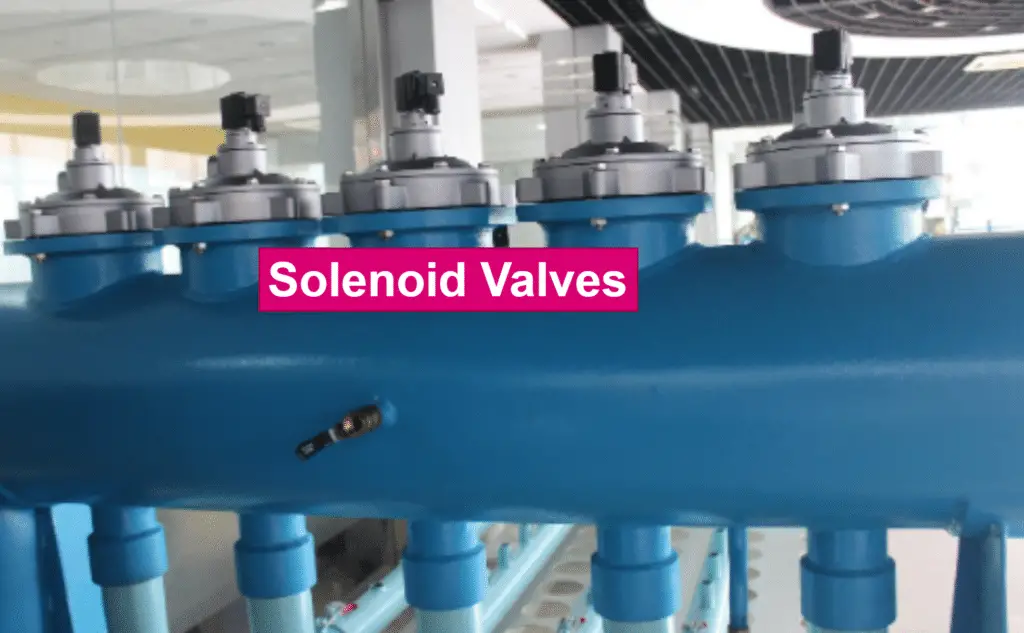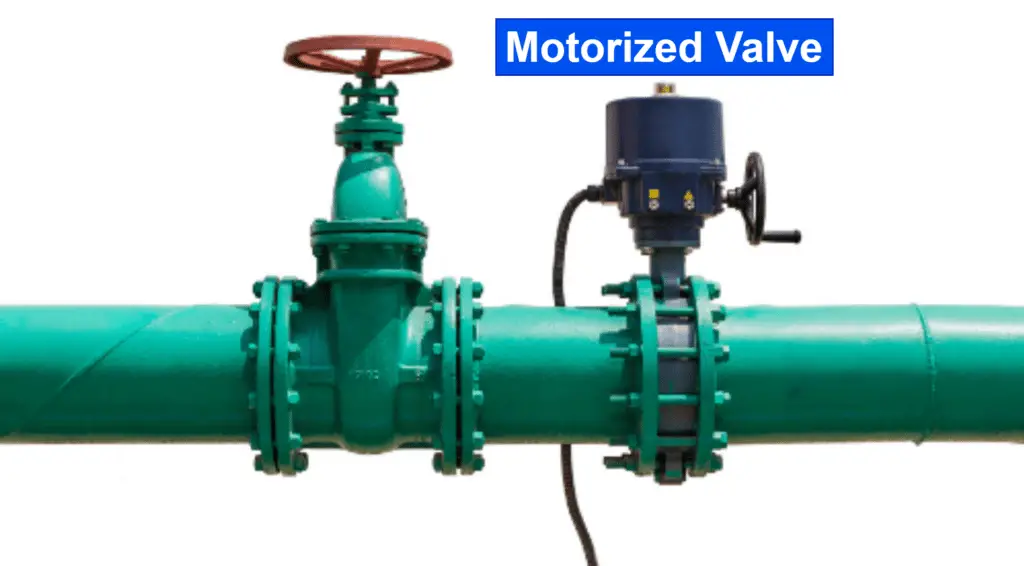In this article, we will discuss the difference between solenoid valve and motorized valve. The solenoid valves & motorized valves are widely used in the process industry. In many important projects, the solenoid valve becomes a key player. In designing a process application, we often debate whether a valve body should be operated by a motor or a solenoid.
There is a complementary relationship between a motorized valve and the solenoid valve. In case, certain specifications of the solenoid valve cannot meet our project requirements, usually, we consider selecting a small motorized valve.
In this article, we are going to explain when we should choose one option or another, but first of all, let us understand what a solenoid valve is and what other modalities exist.

Purpose of a valve
The basic purpose of a valve, controlled by a solenoid is the same as those controlled by a motor. But depending on the use and the application to which we allocate that valve, it will be necessarily either a solenoid valve or a motorized valve.
Normally, in applications in which we need low energy consumption, we choose motor-controlled ones. Motorized valves consume extra energy in the transitions between one state and another, allowing us to stop them in a specific position. Likewise, for large valves, it is better to use motor-controlled ones since they are much easier to implement.
On the other hand, for applications in which the priority is the transition speed, it is better to use those controlled by solenoids, since the linear movement generated by solenoids is very fast.
In the same way, if we have small process pipelines it is common to use the solenoid valve since they are very easy to implement.
What is a Solenoid Valve?
A solenoid valve opens and closes the passage to control the fluid passage. When we apply voltage to a solenoid coil, the magnet is pulled toward the eccentric spring. As a result, the piston moves upward in its housing. The solenoid valve has two springs on the both sides of the coil and therefore, the more pressure is required to activate the valve in comparison to the ball-type valve.

The plunger inside the solenoid cylinder attached to the solenoid movement mechanism. On solenoid valve’s coil energization, an electromagnetic force pushes the plunger to open or close an orifices’. On de-energization of SV coil, the plunger returns to its normal position.

Thus, a solenoid valve generates magnetic force by electricity, and, the generated force lift the plunger to control the opening or closing of the passage inside the valve body. The solenoid valve is small in size usually ¼ inch, 3/8 inch, or up to 2 inches. If we need a bigger size, we can customize it, but the cost increases with size.
Advantages of the Solenoid Valve
The followings are the advantages of solenoid valve.
- Fast response time: The opening/closing speed is very fast and it operates in less than 0.5 seconds.
- It can control fluid in various automated machines because its size is small.
- It can be modified by changing the design of a plug or valve seat so that it can be made more pressure & leakage resistant.
- Simple construction
- Low maintenance cost
- It can be mounted in horizontal and vertical position. However, it is recommended to install the solenoid valve in horizontal position.
- Solenoid valves are compatible with both DC and AC voltage
What is a Motorized Valve?
The motorized valve converts electric energy into power to drive the rotating ball, thereby controlling the opening or closing of the valve. A motorized valve use an electric motor for open or close operation through a gear train mechanism. The motorized valve is suitable for those applications that need a very large valve to control the fluid flow such as aircraft deicing, agricultural irrigation and automated fire suppression.

Motorized valves allow to control and regulate a fluid based on an electrical signal, which can be current or voltage. The association of these valves with control electronics allows them to improve their level of precision and therefore, expand their field of application.
Its main applications are position and force control because the movements are proportional and precise which allows more exact management of the liquid passages. They can be classified into flow valves, and pressure valves.
Advantages of Motorized Valve
The followings are the advantages of motorized valve.
- It has a longer life.
- Possible to realize different functions by changing the wiring mode, such as time control type, automatic reset type, setting type, etc.
- It can be used in various automation equipment and projects because of compact in size.
- There is no constraint for mounting location because the motorized valves are suitable for mounting in both horizontal and vertical positions.
Difference Between Solenoid Valve and Motorized Valve
- A solenoid valve is an electromechanical device used to control the passage of a gas or a fluid through a pipeline. It is very popular among electrical power-operated valves. Generally, they have two positions open and are closed. This type of valve moves by the action of the solenoid coil. A solenoid valve work on the principle of electromagnetism, where a motorized value is operated by an electric motor.
- The solenoid valve can be categorized into two-way, three-way, or four-way valves. The motorized valve can be categorized into quarter-turn, linear, or multi-turn.
- The solenoid valves are designed to be used with water, oil, gas, air fuel, or steam. We can also find them made of brass, stainless steel, or PVC, depending on the fluid in which they are to be used. The motorized valve can be used for almost every types of medium.
- In solenoid valve, the body is in charge of controlling the amount of fluid that circulates through it, whereas in motorized valve, the motor part or actuator is in charge of applying the necessary force to obtain the movement of the body to carry out the regulation.
- Solenoid valves differentiate them from motorized valves with a motor that drives the mechanism and allows them to have open or closed positions.
- Solenoid valves, depending on their intended use work in two different modes. One type is direct action and the other is indirect action. They can be two-way, three-way, or four-way openings. Whereas, the motorized valves work in quarter-turn, linear, or multi-turn.
- The solenoid valves are used to open and close. On the other hand, a motorized valve can open and close, and also in addition to that it adjusts the flow.
- The valve body structure of the solenoid is closing with plug type, while the motorized valve is ball type.
- When the coil of solenoid valve receives voltage, it creates magnetic field and operates very fast in response to the electric current. However, this quick operation does not provide a smooth passage of fluid. On the other hand, the motorized respond slowly. however it controls the fluid precisely and accurately. Solenoid valve switching time is very less in the order of 0.5 seconds, whereas motorized valve switching time is 1 to 5 seconds.
- The solenoid valve has many tiny parts such as coil, springs, plunger, diaphragm & seals. etc. Therefore, they need more maintenance. On the other hand, the motorized valves need less maintenance compared to the motorized valve.
- The solenoid has a coil that consumes the power during solenoid operation. The motorized valve has a motor that consume more power during operation. Thus, solenoid valve consumes less power compared to solenoid valves.
- The motorized valve position is maintained as it is even in the case of power failure. In the case of the solenoid valve, it depends on the set or reset type feature of solenoid valve.
- The Motorized valves operates when the command is given to its motor, it will hold on that position if we withdraw the command because motor does not receive power in this case. The next operation can be initiated by issuing a command from PLC. Thus, the motorized valve consumes power only during the operation of electric motor. This improves the energy efficiency & lowers the heat generation and dissipation. The special type of solenoid valve is required to be install to have the feature of retaining valve position after power failure or command withdrawal. Thus solenoid valves need a continuous power supply to its coil to hold the certain position.
- Solenoid valves are suitable for small diameter and small flow control. The coil of solenoid valve may damage because of its fast operation. The solenoid valve needs to be cleaned at regular interval to avoid deposition of dust and dirt in the plunger and Its passage. The motorized valves are suitable for large flow control in a large diameter pipe. The valve operates slowly and the motor can withstand the voltage transients, therefore the valve does not have any special requirement of cleanliness of the medium.
- Solenoids are with high transition speed than the motorized valve.
- Motorized valve body construction is simple compared to the solenoid valve.
- The solenoid valve operates very quickly and this operation can damage the valve and pipeline if there is high- pressure media. Thus, solenoid valves are prone to damage in the case of high-pressure media and they are not suitable for such applications. On the other hand, the motorized valves can operate even at high process pressure.
- Motorized valves operate both with analog and digital signals, whereas solenoid valves operate with digital signals only.
- A solenoid valve is suitable for open-loop control, whereas a motorized valve is used for closed-loop control.
- Solenoids have a shorter life span compared to the motorized valve.
- Solenoids have a small aperture of opening, process medium should be dirt and dust free. Air quality is to be maintained. No such issue with the motorized valve.
This is all about the difference between a solenoid valve and a motorized valve.